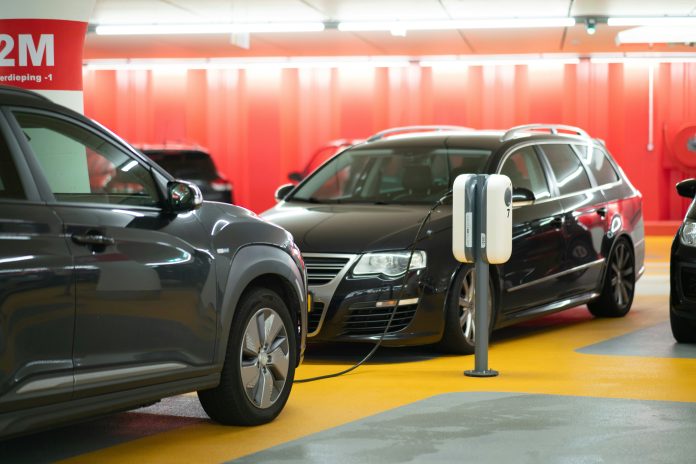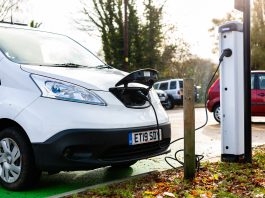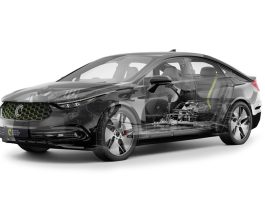The rapid growth of electric vehicles across global markets holds the potential to make the industry carbon-neutral. However, this expansion increases range anxiety and other dissatisfactions among consumers.
Electrifying cars has the power to solve many environmental problems. The consistent adoption since EVs’ first introduction has created a good impression among consumers, which has led to the market’s stable growth in the past years. However, this progress isn’t smooth sailing, as the customer experience isn’t always pleasing.
According to J.D. Power’s 2024 study on electric vehicle user experience and public charging, user satisfaction with slower Level 2 chargers is declining. Reception to fast chargers is slowly improving, though still tempered, as many are still unsatisfied with the time it takes to charge their vehicles.
Additionally, many report losing patience over inadequate EV infrastructure. The study indicated that 19% of all EV owners have found themselves unable to charge their vehicles at charging stations due to damaged or out-of-service chargers or excessively long wait times. The charging infrastructure’s flaws have increased scepticism over its adoption, plateauing growth and further expansion.
The current state of EV infrastructure
Sales of electric cars continue to balloon and are expected to reach 17 million in 2024. If this figure is met by the end of the year, it will account for more than one in five cars sold globally. The healthy market for EVs attracts more consumers out of the US, where economies are developing. For instance, China accounted for a whopping 60% of EV sales in 2023, followed by Europe and the US.
The sustainability flair of EVs is a considerable factor motivating people to keep choosing them for traditional upgrades. However, the market is facing challenges that, if not addressed, could impede its growth and revert consumer choice to non-electric vehicle options.
These problems are slowing the pace at which EV trades are executed. In addition, people are becoming impatient for the lack of solutions to these shortfalls. Despite this fact, the overall market stays in an uptrend, but it remains unknown to everyone when this could upend and cause more problems.
Factors contributing to consumer impatience
The increasing doubt over EVs complicates further adoptions. Besides their high cost, which makes them almost exclusive to wealthy Americans, buyers are plagued by factors like range anxiety, perceived limitation and the sluggish response to the lack of charging infrastructure.
Lack of convenient and fast-charging options
Unfortunately, EV infrastructure remains inadequate. It can’t catch up to the rapid and large-scale adoption of EVs. Early owners were privileged to have private, convenient chargers right in their garages. Most charging stations today are prevalently set up this way, which creates a problem for others who can’t afford or have challenges with personal installations.
While public infrastructure has improved in recent years, the drawback is that it is limited to urban areas, where many people use EVs. How about those living in the countryside? This flaw restricts EV adoption outside cities to eco-conscious consumers in rural areas.
Installing more charging systems in public locations will overcome this drawback. A plan to increase these is underway. By 2035, the number of public chargers could grow to almost 25 million, a sixfold increase from 2023.
Cost barriers associated with home installation
Installing a personal charger at home can help solve battery problems. However, it’s associated with extra costs that some EV owners may find impractical. It could be a choice for drivers outside big cities where infrastructure is lacking but not for urban dwellers where charging stations are abundant.
Residential charging stations come in Level 1 and 2 types. The former is cheaper, costing between $550 and $1,385. It can recover three to five miles of range per hour. Level 2 works impeccably with long-range EVs, recovering 12-80 miles of range per hour. However, expenses can rack up to $1,100. Installation can be as little as $300 to as high as $50,000.
Range anxiety and perceived limitations of EVs
Another concern for consumers is the downsides of EVs. While electric cars can help address many ecological challenges, multiple factors affect buyers’ confidence in EVs. One is range anxiety, which refers to the driver’s fear of running out of battery before they reach an available charging station.
Battery electric vehicles don’t have a petrol engine or a backup, so you can get stranded anywhere. Drivers approach this weakness by targeting charging stations closer to their range. Calculating the distance is required to make this work. This limited autonomy through reduced driving range provokes stress in drivers, affecting their trust in EVs.
To minimise range anxiety, drivers use apps to track charging stations. A few taps on their smartphones display chargers near their location whenever they find themselves low.
Strategies to improve EV infrastructure
Boosting EV systems requires a combination of smart strategy, implementation and solutions to solve their existing flaws.
Pairing solar with EV to upgrade power systems
Solar has become a top green energy source for businesses and households. The price drop of 70% over the past 10 years has expanded investments in this area, increasing access to the public.
Experts see better use of solar energy by coupling it with EVs to stabilise the power system. Parking lots covered with solar canopies can electrify vehicles through a backup charging source outside the grid.
If implemented appropriately, this model can help manage energy issues in case grid problems occur and transform into significant profits by selling extra power back to energy operators. For EV drivers, integrating renewable sources equates to a more reliable and flexible power system that can reduce their range anxiety.
Expanding ultra-fast charging technologies
Charging innovations have failed to keep pace with the rapid growth of EVs on the roads, resulting in a disproportionate demand and supply. One strategy to address this weak spot is to adopt ultra-fast charging technologies.
Charging from a low-voltage network takes plenty of time. While others may find this bearable, the disadvantage is the poor operational capabilities due to uneven charging load.
Ultra-fast charging presents a magic bullet for this problem. This EV infrastructure duplicates the refuelling network of a combustion vehicle, cutting charging time to five to ten minutes. This efficient process can lead to higher power output, reduce waiting time and restore consumers’ optimistic sentiments about EVs.
Investing in wireless charging technology
It may be an exclusive option for now, but powering up EVs plug-free could reach commercialisation soon. It emerged as a promising solution for charging issues, addressing all the inadequacies of a plug system.
Technologies that can make wireless charging possible include inductive, capacitive and magnetic gear. Each has its own limitations and strengths. For instance, inductive is convenient, but its power transfer efficiency needs to be improved.
During charging, some energy gets lost due to electromagnetic interference and the distance between the vehicle and the charging pad. These innovations require refinement. The day they’re ready for widespread use is when dynamic wireless charging becomes a norm.
EV infrastructure requires attention and effort
The leading deterrents to adoption are the lack of public charging stations, perceived limitations, reduced autonomy and the costly installation for private use. Existing data shows a mismatch in the demand-supply dynamic between electric vehicles and their EV infrastructure. This problem thwarts the further growth of electric cars and leads to a loss of confidence in the product.
By enhancing the ratio of EVs to chargers through technological solutions like wireless charging, auto manufacturers can regain consumers’ trust. Solving their pressing concerns can help them exit their consolidation levels and restart growth.









